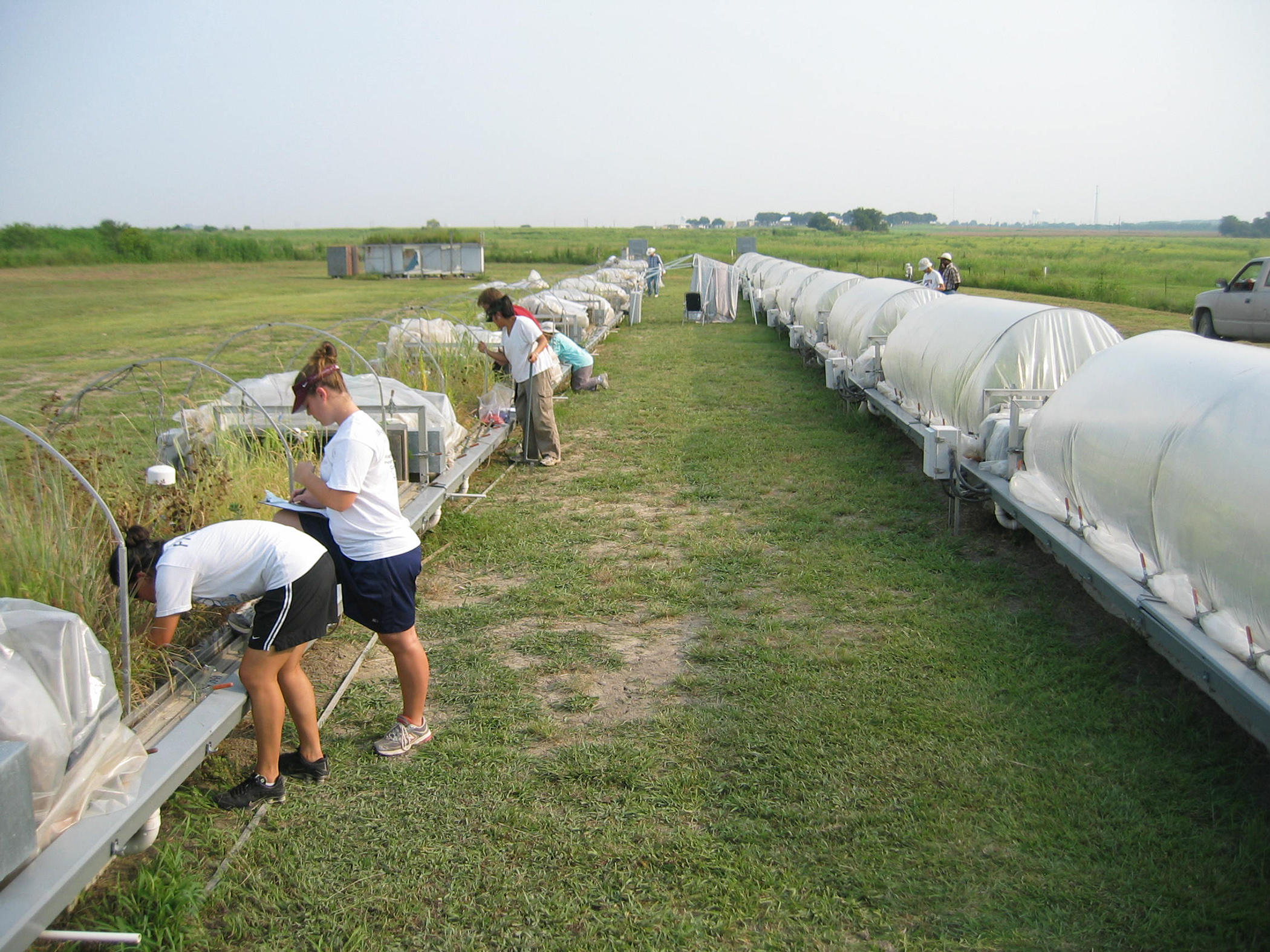Predicting future climate and ecological change is among the world’s top priorities, and an Auburn University faculty member is among a group of researchers whose findings in a recently published study on carbon dioxide emissions could make a vast contribution to those future outlooks.
Mike Aspinwall, assistant professor of tree physiology and ecophysiology in the School of Forestry and Wildlife Sciences, said the study examines how rising atmospheric carbon dioxide, or CO2, might impact CO2 emissions from grassland soils.
The findings of the nearly decade-long study, published in the Proceedings of the National Academy of Sciences, stresses that understanding ecosystem carbon-cycling responses to atmospheric CO2 enrichment is critical to preserve biodiversity and maintain vital ecosystem services in grasslands impacted by global change.
The research explored CO2 emissions from soil, which represent the largest flux of CO2 from the land surface to the atmosphere, Aspinwall said.
“Changes in soil CO2 emissions will have consequences for future climate, yet our understanding of the impacts of rising atmospheric CO2—a key driver of global change—on CO2 emissions from soil is limited,” he said.
There has been a particularly limited understanding of how factors such as plant species diversity and soil properties might influence the way rising atmospheric CO2 impacts soil CO2 emissions, he added.
Aspinwall’s co-authors represented the USDA Agricultural Research Service, the University of Texas at Austin, Stanford University and Tennessee State University.
He said the team approached the research in several unique ways.
First, instead of using two discrete CO2 treatments, the researchers used a continuous gradient of atmospheric CO2, spanning past CO2 concentrations—about 250 parts per million, or ppm—to future CO2 concentrations of about 500 ppm.
“This allowed us to examine both the ‘shape’ and magnitude of the response to CO2,” Aspinwall said.
Secondly, the experiment incorporated different soil types and textures—including sandy, silty and clayey—an important inclusion since texture influences both nutrient and water availability, which in turn can influence how plants and ecosystems respond to changing CO2.
Aspinwall said the third unique approach involved the length of the experiment—eight years—which is important to this research.
“Longer-term experiments like this are very rare and provide more certainty about future responses,” he said.
Janaki Alavalapati, dean of the School of Forestry and Wildlife Sciences, underscored the study’s significance.
“The research of Dr. Aspinwall and his team on CO2 emissions from soil presents important findings that will go a long way in future predictions of climate and ecological change,” Alavalapati said. “The team’s dedication to this uniquely sourced research is a noteworthy contribution.”
Aspinwall is optimistic about its impact.
“We hope this research will improve our ability to predict changes in soil CO2 emissions over space and time—which will inform predictions of future climate and ecological change,” he said.
(Written by Teri Greene)
Related Links
- Mike Aspinwall, Assistant Professor of Tree Physiology and Ecophysiology
- Multiple constraints cause positive and negative feedbacks limiting grassland soil CO2 efflux under CO2 enrichment
- Research News
- Current Research
- 75 Years of Forestry and Wildlife Sciences
- Sustainable Development Goal 13: Climate Action












